I. Thinking based on the problem
In March 2015, Premier Li Keqiang first proposed the "Internet +" action plan in the government work report. For a time, "Internet +" became the focus of attention. As the foundation of a century-old plan, education must keep pace with the times. Nowadays, new concepts and new technologies such as e-textbooks, flipping classrooms, MOOCs, online learning, and mobile classrooms are constantly refreshing the traditional way of education. However, these future classroom models based on mobile Internet, big data, cloud computing, etc. still only stay at In the small-scale exploration and attempt of the individual, the surface state potential in the area is not formed. The reason cannot be simply attributed to the inertia of the principal, the teacher's concept and the transformation of thinking. In fact, most of the frontline teachers are open and inclusive to new technologies and new media. They are very willing to apply the Internet in education and teaching activities. But for teachers, they don't need too fancy functions, do not need too avant-garde page interaction, they just want to truly express their teaching ideas, and can easily arrange the teaching interaction activities they want. Therefore, we have the responsibility to provide a “good to use†tool for frontline teachers, to provide services for their education and teaching, to better focus on the development of students, and to achieve the goal of “Lide the Tree Manâ€. Rather than blindly pursuing the “highâ€, fancy, cutting-edge new technologies and the physical accumulation of new media, teachers are tired of technology.
Multimedia teaching breaks the static barriers of graphic teaching, and constructs the three-dimensional environment of teaching with sound, animation and video. It has become the backbone of the transformation of traditional teaching mode. However, when multimedia teaching develops to a certain extent, new bottlenecks emerge: the three-dimensional environment surrounds the students, and the students are easily become one-way viewers who are “electrically irrigatedâ€, passively subjected to strong sensory stimulation and even brain numbness and thinking solidification.
With the continuous development of information technology, the teaching media has gradually become digital, networked and intelligent. The interactive whiteboard has gradually replaced the traditional teaching media (the multimedia teaching as a new generation of teaching media (which the author calls "multimedia teaching 2.0 mode"). 1.0 mode), continuously promoting bilateral activities of teaching and learning. However, the interactive whiteboard teaching application classroom teaching has not been popularized for more than ten years (one tenth of the normal use). The reasons are as follows:
Hardware level: high hardware requirements, expensive construction, lack of expansion, complicated operation, and poor user experience;
Teacher level: Many technical difficulties affect the enthusiasm of teachers;
Student level: single function, can not reflect the interactive nature of the classroom, in most cases, students are more than just a circle on the stage, draw a picture, waste time to talk back and forth, the teaching effect is not satisfactory;
Effect level: teachers and students are tired of technology, leading to the end of the cart before the end, the form is greater than the effect, deviating from the essence of education.
Based on the above understanding, the author conducts empirical experimental research in all disciplines of the school, uses mobile communication technology to innovate and transform the original interactive whiteboard technology, and adopts the combination of mobile terminal + ordinary projection in the same screen technology environment to build a new class. Platform, this can be a good substitute for the interactive whiteboard teaching mode, and enter the "useful" "multimedia teaching 3.0" era, so that classroom teaching is more flexible.
Second, the definition of "Multimedia Teaching 3.0 Mode"
"Multimedia Teaching 3.0 Mode" refers to a tablet computer (for example, Xiaomi Tablet 2) and a digital projector connected to the same screen (millet box), using the projector to project the contents of the tablet to the whiteboard, and then using the wps office software. The whiteboard demonstration function realizes the simulation whiteboard teaching, which integrates the electronic, digital and touch functions, and realizes the interactive interaction, which makes the presentation form of the learning content more flexible and diverse, and effectively realizes the technology in the interaction between teachers and students, interaction and human interaction. Integration with education to promote changes in learning styles. At the same time, with the platform software, you can build a future classroom model and realize a mix of online and offline learning methods.
Third, multimedia teaching 3.0 module construction chart

Architecture diagram of hardware environment of multimedia teaching 3.0 mode
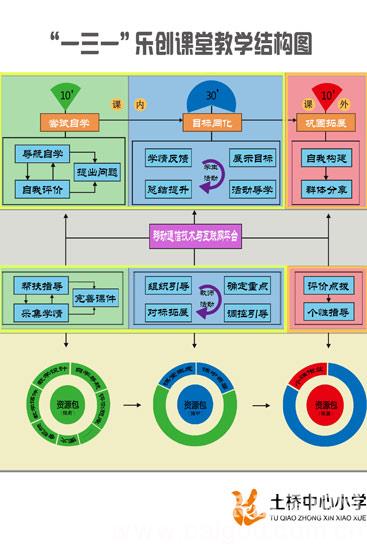
"131 music creation classroom teaching structure diagram" under the multimedia teaching 3.0 mode
Fourth, the advantages of "Multimedia Teaching 3.0 Mode"
(1) "Remove" the podium to realize the "micro" management of the classroom
The podium has always been the main position of teachers in the traditional teaching mode, proclaiming the dominant position of teachers in teaching. However, the education of the teacher standing on the podium is inevitably caused by the unique personality and learning style of the students. With the continuous development of education, people realize that learners themselves are the key to education, and students are the main body of the classroom. To achieve the equal role of teachers and students, we need to downplay the main position of teachers and the platform, let the teachers go to the students, pay attention to the students, and experience the process of knowledge learning together. But we have no choice but to find that with the promotion of multimedia technology in the classroom, teachers seem to be more inseparable from the platform - teachers need to play courseware on the computer of the podium, with the help of projection display, you need to point, draw, and do on the whiteboard. Annotations... These high-techs are like an invisible rope that binds the teacher around the podium. Therefore, in order to get rid of this rope, we must optimize these teaching platforms, we need to make them move, move with the teacher, and move with the classroom. According to the survey, the most frequently used multimedia operations in the classroom are the courseware (step play), circle focus and physical projection. These three steps account for more than 85% of the teacher's platform operations, and these operations can be fully on the mobile computer platform.
Expanding up, that is to say, the teacher can be separated from the platform.
In the lesson of the eighth volume of the Chinese version of the "Small Swallow", the teacher used the Xiaomi tablet as a courseware operation platform, and opened the operation through the portable tablet computer to free the teacher from the shackles of the podium. To this end, the author deliberately selected the two lessons video recorded before. The first class teacher uses the traditional multimedia platform, and the second class teacher uses the mobile multimedia platform. The author marks the orientation of the teacher's classroom in a small circle in the figure every minute or so. (As shown below) It can be found through comparison that teachers have greater freedom in using mobile multimedia teaching platforms, can carry computers in the classroom and constantly change positions according to needs, better integrate themselves into students, pay attention to students' learning. Process, more teacher-student interaction.
In addition, in the image to the right, we find an interesting phenomenon: the teacher seems to be more "favored" in the lower left corner of this area. In the hot map, the teacher appeared six times in this area. The instructor told us that there were two relatively naughty students in the class sitting in this area. Teachers in the classroom constantly intervened in this area, invisibly reminding and urging the two students to concentrate on listening and actively participate in classroom learning. In the traditional media teaching, if students are distracted and do small movements, if teachers want to effectively intervene, they often need to stop normal classroom teaching and name or remind students. This will inevitably affect the classroom teaching order and time utilization. The adoption of mobile multimedia teaching, through the timely intervention of teachers, often plays the role of “smooth and silentâ€, which also confirms that multimedia mobile platforms have great advantages in “micro†management of students.
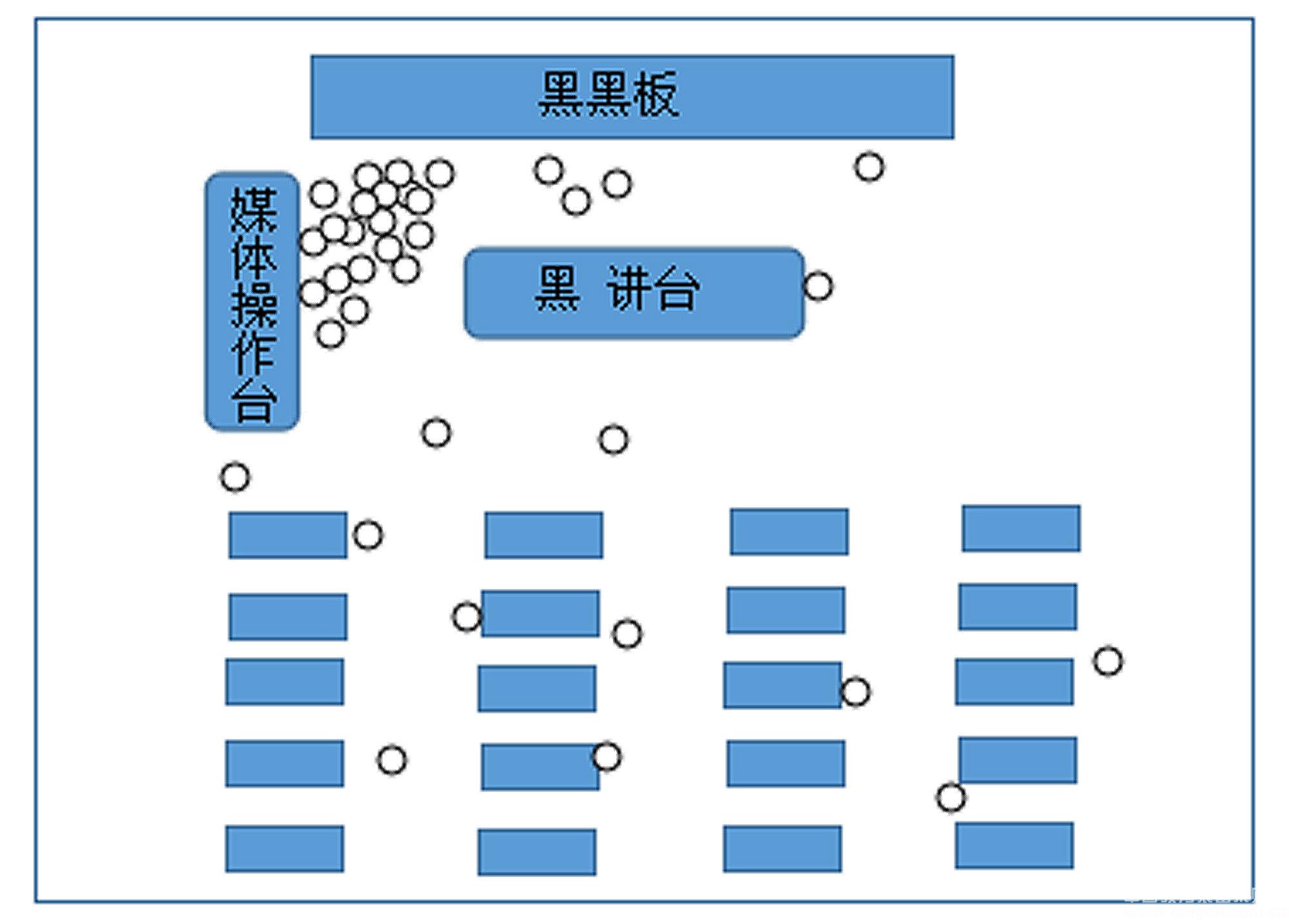
Traditional multimedia platform teacher location distribution
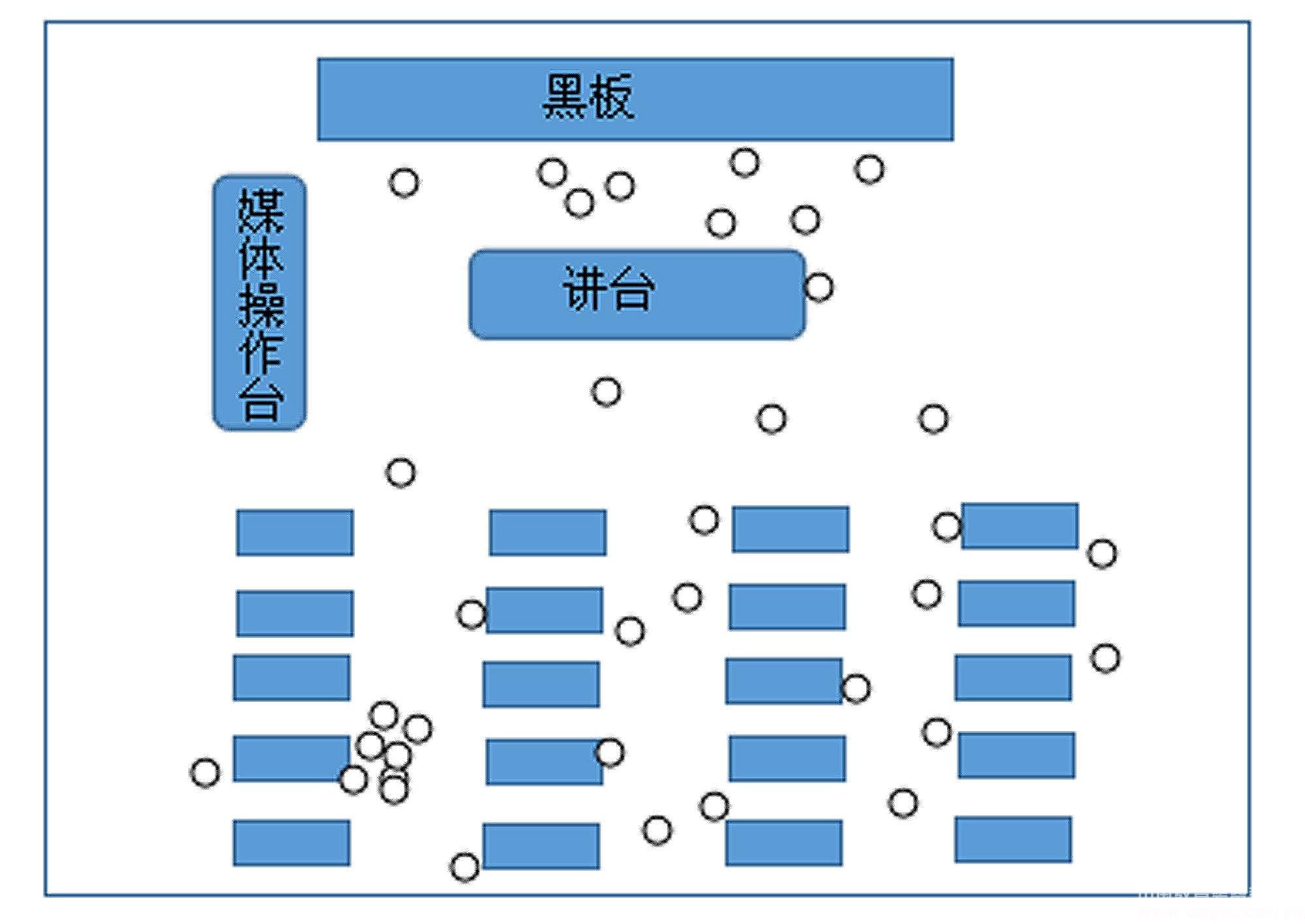
Mobile multimedia platform teacher location distribution
(2) Smart generation, de-storing and truth-seeking
The use of multimedia teaching platforms builds a bridge between the network and the classroom. We often lament the beautiful visual and listening feasts that are produced by the exquisite courseware, and marvel at the smooth classroom experience brought by the streamlined courseware. However, we often see that the teacher will be interrupted by the inadvertent design of a certain courseware, and the student's answer will be transferred due to the inconsistent steps in the courseware. These drawbacks stem from the technical pain points of the linear presentation of regular teaching courseware.
For example, in the second volume of the book "Understanding the Renminbi" in the second edition of the Jiangsu Education Edition, in the process of teaching the "recognition of the RMB" denomination, the method for students to judge the denomination is mainly achieved by finding numbers and unit names. In teaching, teachers generally design this
Sample A's teaching process: Let the students choose one or one of them to tell the denomination judgment method of the RMB. Then the teacher circled the basis for student selection, such as "1", "5", "circle", "corner". If students are free to choose, the order of choice of students is unpredictable, and the basis for judging the denominations of the selected RMB is also diverse, which poses a huge challenge to the teacher's regular courseware production.
But this technical pain point can be completely overcome with the help of mobile multimedia terminals. Nowadays, the mobile computer platform is touch-screen operation, and the teacher does not have to do all the actions when playing the courseware. These circles, paintings and annotations can be operated on the spot by means of the touch-screen pen. Teachers only need to insert simple text, pictures, audio and video materials according to the process of teaching design, and the rest of the micro-operations are dynamically completed in the classroom. The free play of teachers in the classroom has increased, and the classroom has become more agile.
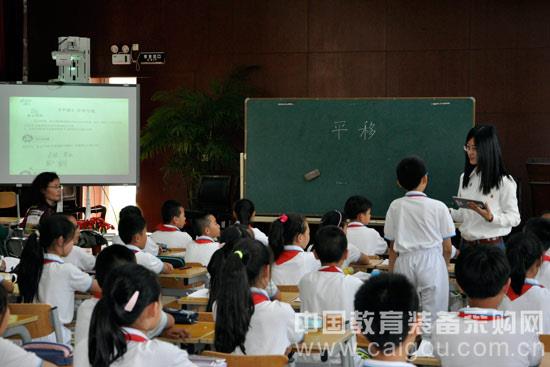
(3) That is, “shooting†or “ratingâ€, effectively expanding the booth function
In the multimedia teaching 2.0 mode, the physical projector was introduced into the teaching. By demonstrating the students' practical operations, the students' learning process gets more attention, and there is more interaction between teachers and students. However, the traditional physical projection is fixed on the podium (stand). The teacher can't present the student's dynamic operation process at any time. Even if some students are selected to go to the stage, it will waste some time. By using the multimedia mobile platform, the teacher can take pictures, record and shoot videos anytime and anywhere while using the camera's own camera function. The students can dynamically display the dynamic operation process, teacher-student interaction, student board performance, practice display. One-stop operation, such as questioning comments, saves students time spent on presentations and improves classroom efficiency.
In the second volume of the mathematics book "Understanding the Renminbi" in the second edition of the Jiangsu Education Edition, in the teaching section of "Learn to Pay", the teacher walks into the middle of the student in time when the student prepares 1 yuan, opens the tablet camera, and shoots the student at close range. Several typical operations, and the photo browsing function is used to project photos onto the screen. Next, let these students combine their photos to explain their reasons. The teacher made some comments in the photo. These instant photos reflect the real state and problems of the students' operations, which not only captures the typical and guarantees the smoothness of the teaching process, but also achieves a better teaching effect.
In the lesson of the sixth volume of mathematics, "Year of the Moon" in the Jiangsu Education Edition, when the students show the fist memory method, the teacher turns on the camera function to partially enlarge the child's fist, record the whole process of the student demonstration, and display the dynamic process on the screen in real time. . This kind of operation is image and novel, it is easy to attract the attention of other students, and it can clearly show the students' operation process, which is convenient for comparison and comparison, and the learning effect is excellent. At this time, the teacher was transformed into a role of a bystander, interacting with other students while watching the screen... both training the students and liberating the teachers.
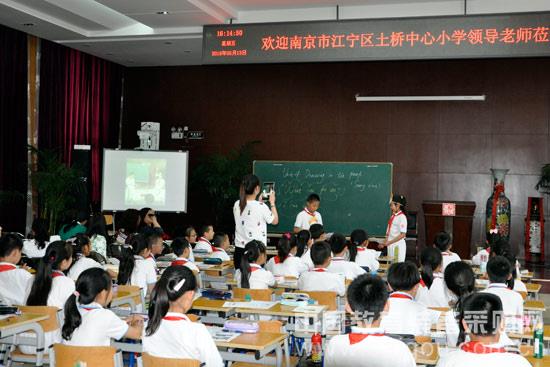
(4) Saying goodbye to the "script" and building a generated classroom
Professor Ye Wei said: “Classroom is a dynamic process, no matter how good the presupposition is, and it is impossible to predict all the details in classroom teaching.†A life-filled classroom is composed of many agile living bodies. Not at all. The problem is that when it appears, the teacher can accurately grasp and generate it in time. "Small generation, big surprise" has many difficulties in practical operation. One of them is the limitation of traditional multimedia teaching. Teachers can't insert the generated materials in time in the already designed teaching courseware. However, with the mobile multimedia platform, teachers can adjust anytime and anywhere according to the actual situation of teaching and learning, because it can easily insert blank pages, instantly grab pictures and small videos that can be taken at will, and even connect to the Internet for timely access. More information. Teachers can edit and annotate the questions or topics that are temporarily generated in the classroom on the designated page, so that teachers do not have to worry about the fluency of classroom teaching due to the addition or modification of ppt.
In the "RMB classification" section, a small episode appeared in the class, and some students introduced the special currency of commemorative coins. Since most students have not seen such coins, they think that this is a fake. Encounter such an "emergency",
The teacher did not panic, but seized this accidental generation and promptly presented to the Internet through the mobile platform to help students solve doubts. The rich network resources allow students to know more about the RMB, and to appreciate the diversity of classifications, and the classroom is therefore more colorful. Such classroom teaching is randomly generated, which is undoubtedly alive, and it reflects the teaching process shared by teachers and students. This is not only the display of the teachers' own qualities, but also the embodiment of the advantages of tablet teaching.
(5) Focus on the process and record the moment of student growth
Educational evaluation is an indispensable part of teaching. The new curriculum standards require diversification of evaluation forms and contents, and diversification of evaluation objectives. Evaluation should focus on both the process and the results, so that the evaluation of students' learning process and learning outcomes can be harmonious. The application of the mobile multimedia platform provides more realistic and rich information for process evaluation. Each picture taken and recorded by the teacher in the classroom is a good material for recording the learning process and achievements of the students.
Take the 4B Unit 3 "Story time" of Jiangsu Education as an example. In the feedback session, the group reads the text twice and exchanges the phrase of the society. The group cooperated to showcase, the rest of the students listened to the audit together with the teachers. The teachers used the flat-panel editing function, on-the-spot comments, and ticked the customs. For reading the wrong phrases, the teachers marked them and discussed with the students to correct the mistakes. In this process, the participation of students is greatly improved, the sense of ownership is enhanced, and the learning efficiency is also improved.
In the student presentation session, including a group of four and a group to choose the way they like to read the text, a group of three to cooperate in retelling the text, and to use the important knowledge learned in this class to boldly and freely express their daily life, the teacher uses Inserting a blank page on the tablet, taking a small video at hand, recording the student's performance process on the big screen, and the children's performance desires are greatly enhanced in the face of the camera; at the same time, they get rid of the serious performance of some group members, and the other students are free and sloppy. Students are able to focus their attention and improve classroom efficiency. On the other hand, through the sorting and classification after class, it is easy for teachers to establish a portfolio of students' learning and growth. In addition, these materials that record the moment of student growth can be passed to parents through mobile software such as WeChat and QQ, so that parents can understand the children's learning situation at home, draw closer to homeschool communication, and provide lessons for children. The best channel for post-consolidation and review!
(6) Perfect feedback and timely retention of teaching experience
Teaching reflection plays a vital role in the growth of teachers. Through reflection, teachers can constantly analyze their advantages and disadvantages in classroom teaching and summarize them, accumulate experience, and improve their teaching ability. With the development of science and technology, teachers can no longer carry out teaching reflection through simple memory areas. Using the screen recording function provided by wps office in the mobile multimedia platform, teachers can simultaneously record the whole process of teaching in the classroom, including PPT presentations, key tips, difficult breakthroughs, generation expansion, student operations, and interactive dialogue between teachers and students. These materials can provide first-hand real material for teachers' teaching reflection. When teachers re-examine their classrooms in such a real and multi-dimensional way, there may be unexpected gains.
While the mobile terminal based on the same screen technology is applied in classroom teaching, it also pays attention to the architecture of the future classroom, that is, the mixture of traditional classroom teaching and online independent learning, classroom teaching based on mobile terminals and online based on student mobile terminals. A mix of learning. In this way, it can not only play the leading role of teachers in guiding, inspiring and monitoring the teaching process, but also fully demonstrate the initiative, enthusiasm and creativity of students as the main body of learning. The author believes that only by adding the student's tablet and teaching platform software and related hardware devices on the basis of the multimedia teaching 3.0 mode, the organic integration of formal learning (classroom teaching) and informal learning (online learning) can be realized. Time and space restrictions really make learning happen anywhere, anytime. (Text | Nanjing Jiangning District Tuqiao Central Primary School)
Lever Arch File,A4 Lever Arch File,Plastic Lever Arch File,Office Lever Arch File
TAISHAN JINRI STATIONERY PLASTIC CO.,LTD , https://www.jinri-folder.com